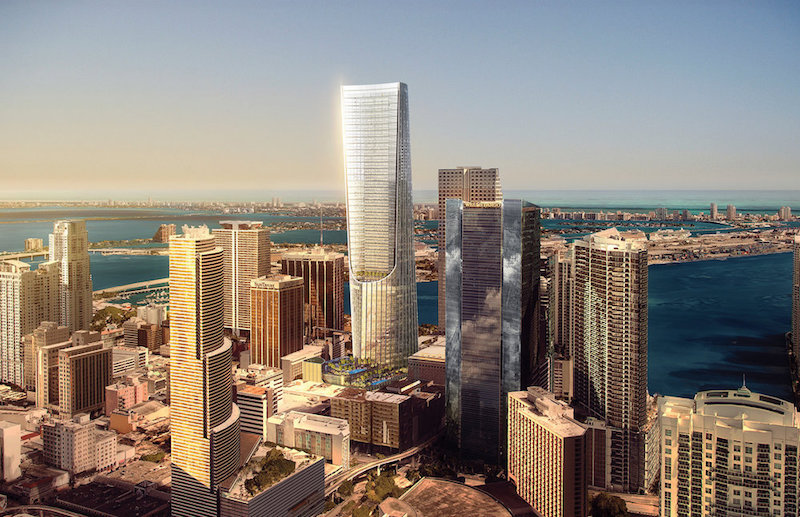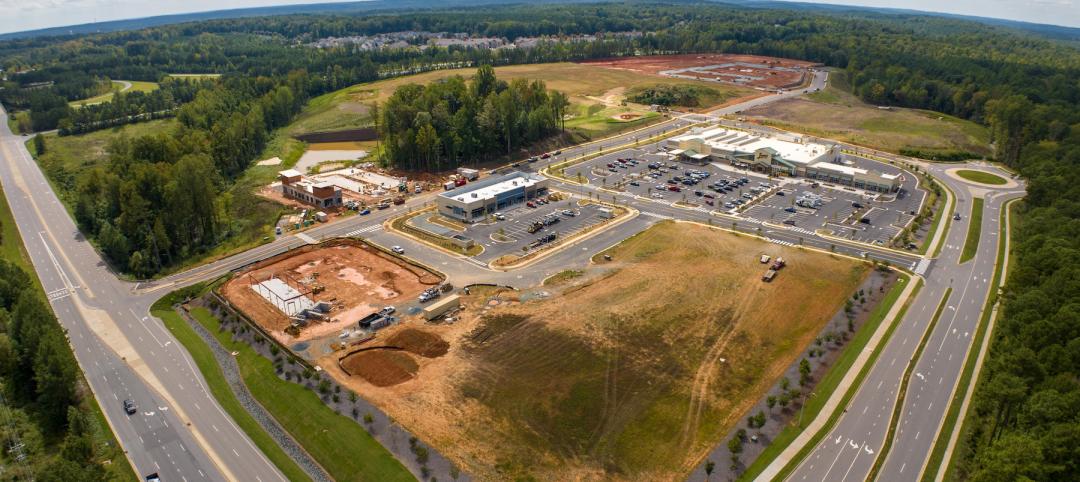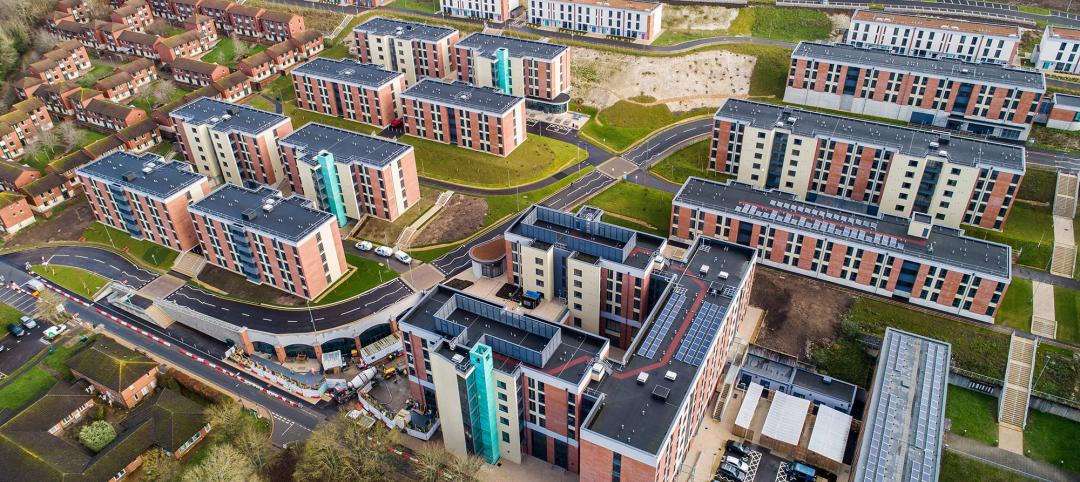One Bayfront Plaza, a mixed-use development overlooking Biscayne Bay and comprising over 3 million sf, has been given the tentative date of January 2019 for construction to begin.
The tower, which will rise to the maximum height allotted by the FAA in Miami of 1,049 feet, will provide, 532,000 sf of Class A office space, 200,000 sf of retail on the bottom floors, a 200-room luxury convention hotel, and 1,052 apartment units. The amount of apartments and the space available for retail were both upwardly revised by Tibor Hollo, the founder of Florida East Coast Realty, the project’s developer, in an interview with Miami Today, according to TheNextMiami.com. Originally, the project called for 902 residences and 103,959 sf of retail space.
The office space will take its design cues from New York City buildings and provide columnless, open floor plans. The retail aspect will feature three pool decks and a green roof and will also include a pedestrian bridge that connects to the Bayfront Park Metro Mover Station.
The tower will make use 95 stories to reach the maximum height of 1,049 feet and will become the tallest tower in Miami. The project is expected to take a little over three years to complete, giving it an approximate completion date of mid-year 2022. Kohn Pedersen Fox Associates is the design architect and ODP Architects is the architect of record.
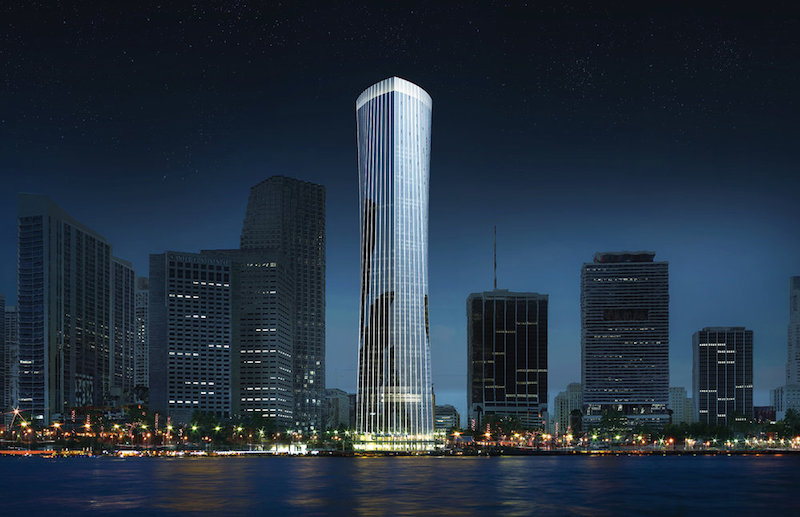 Rendering courtesy of ODP Architects.
Rendering courtesy of ODP Architects.
 Rendering courtesy of ODP Architects.
Rendering courtesy of ODP Architects.
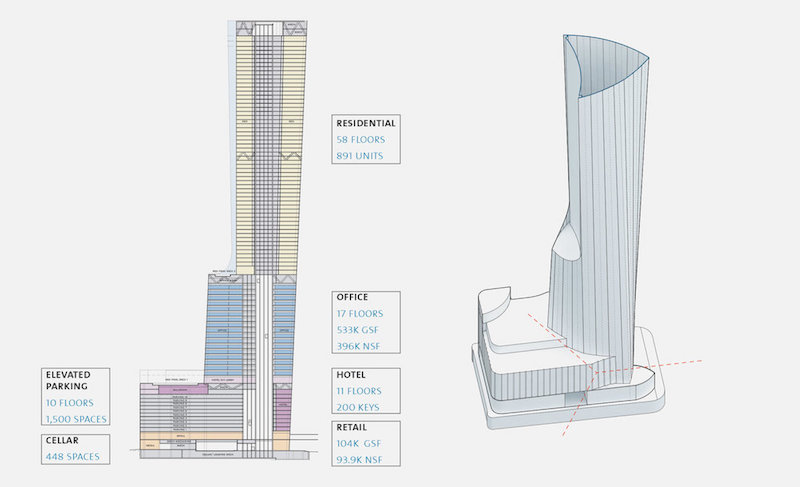 Rendering courtesy of ODP Architects.
Rendering courtesy of ODP Architects.
Related Stories
Mixed-Use | Oct 5, 2023
Mixed-use pieces supporting a master plan in North Carolina fall into place
Near Chatham Park, a new multifamily housing community follows the opening of a shopping center.
Contractors | Sep 25, 2023
Balfour Beatty expands its operations in Tampa Bay, Fla.
Balfour Beatty is expanding its leading construction operations into the Tampa Bay area offering specialized and expert services to deliver premier projects along Florida’s Gulf Coast.
Mixed-Use | Sep 20, 2023
Tampa Bay Rays, Hines finalize deal for a stadium-anchored multiuse district in St. Petersburg, Fla.
The Tampa Bay Rays Major League Baseball team announced that it has reached an agreement with St. Petersburg and Pinellas County on a $6.5 billion, 86-acre mixed-use development that will include a new 30,000-seat ballpark and an array of office, housing, hotel, retail, and restaurant space totaling 8 million sf.
Adaptive Reuse | Sep 19, 2023
Transforming shopping malls into 21st century neighborhoods
As we reimagine the antiquated shopping mall, Marc Asnis, AICP, Associate, Perkins&Will, details four first steps to consider.
Resort Design | Sep 18, 2023
Luxury resort provides new housing community for its employees
The Wisteria community will feature a slew of exclusive amenities, including a market, pub, and fitness center, in addition to 33 new patio homes.
Adaptive Reuse | Aug 31, 2023
Small town takes over big box
GBBN associate Claire Shafer, AIA, breaks down the firm's recreational adaptive reuse project for a small Indiana town.
Giants 400 | Aug 22, 2023
Top 115 Architecture Engineering Firms for 2023
Stantec, HDR, Page, HOK, and Arcadis North America top the rankings of the nation's largest architecture engineering (AE) firms for nonresidential building and multifamily housing work, as reported in Building Design+Construction's 2023 Giants 400 Report.
Giants 400 | Aug 22, 2023
2023 Giants 400 Report: Ranking the nation's largest architecture, engineering, and construction firms
A record 552 AEC firms submitted data for BD+C's 2023 Giants 400 Report. The final report includes 137 rankings across 25 building sectors and specialty categories.
Giants 400 | Aug 22, 2023
Top 175 Architecture Firms for 2023
Gensler, HKS, Perkins&Will, Corgan, and Perkins Eastman top the rankings of the nation's largest architecture firms for nonresidential building and multifamily housing work, as reported in Building Design+Construction's 2023 Giants 400 Report.
Adaptive Reuse | Aug 17, 2023
How to design for adaptive reuse: Don’t reinvent the wheel
Gresham Smith demonstrates the opportunities of adaptive reuse, specifically reusing empty big-box retail and malls, many of which sit unused or underutilized across the country.


